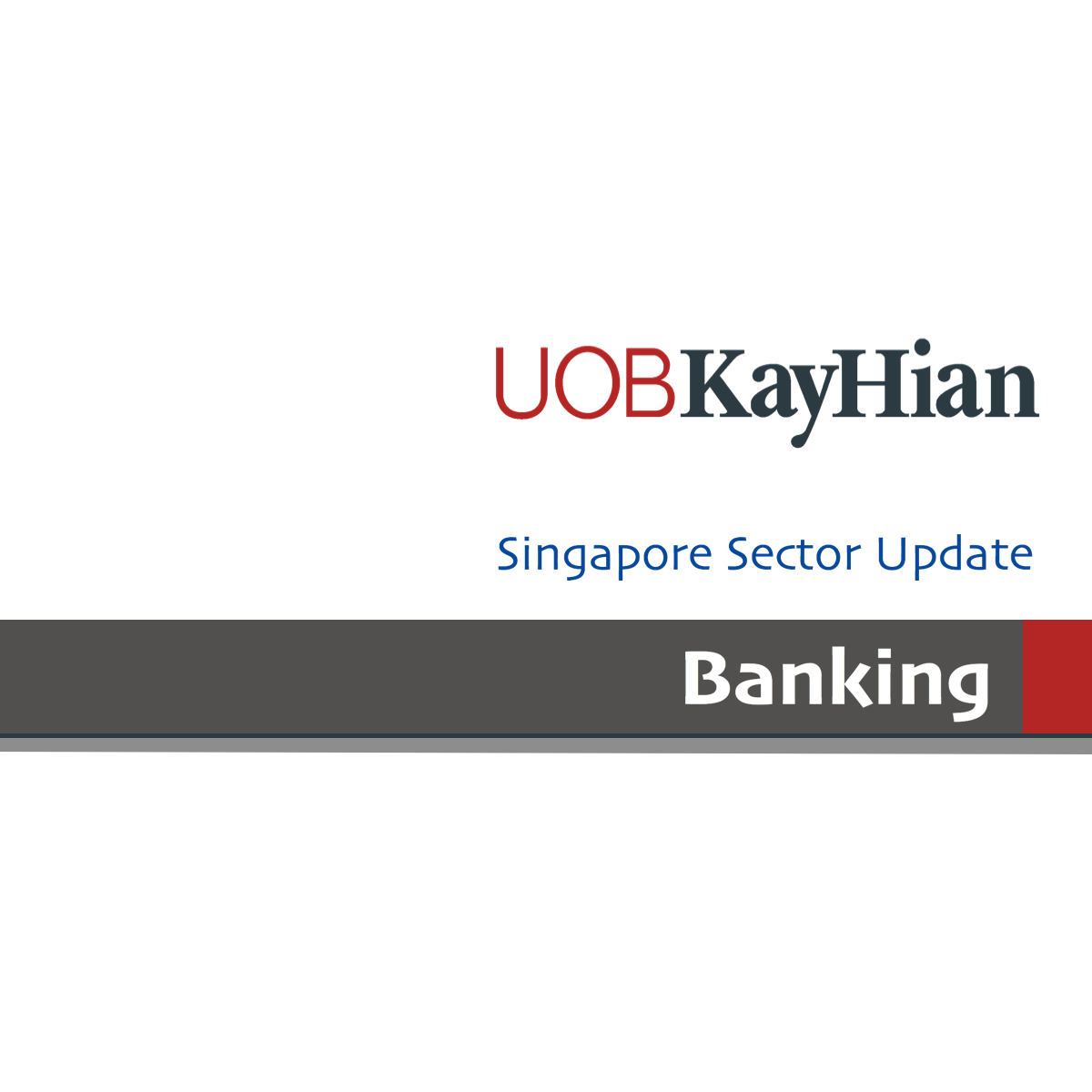 Singapore Banks
DBS GROUP HOLDINGS LTD
D05.SI
OVERSEA-CHINESE BANKING CORP
O39.SI
UNITED OVERSEAS BANK LTD
U11.SI
Singapore Banks
DBS GROUP HOLDINGS LTD
D05.SI
OVERSEA-CHINESE BANKING CORP
O39.SI
UNITED OVERSEAS BANK LTD
U11.SI
Banking – Singapore - 2Q17 Round-up: Keeping Up The Good Work
- OCBC and UOB continue to beat expectations.
- NIM is on an upward trend, trade loans have recovered and contributions from wealth management are marching higher. Headwinds from the oil & gas sector are receding.
- Dividend policies could be reviewed once new capital requirements from Basel 4 are finalised. Maintain OVERWEIGHT.
- BUY OCBC (Target: S$13.38) and DBS (Target: S$24.85).
WHAT’S NEW
- OCBC’s and UOB’s 2Q17 results beat expectations, while DBS’ was in line with expectations.
Contrasting directions for loan growth.
- DBS and OCBC achieved broad-based loan growth of 1.5% and 1.8% qoq respectively. The two banks registered 4.1% and 3.3% qoq in loans to general commerce, indicating recovery in intra-regional trade.
- Conversely, UOB’s loan book contracted 0.6% qoq as Greater China loans declined 6.6% qoq.
NIMs on an upward trend.
- OCBC and UOB reported NIM expansion of 3bp and 2bp respectively, benefitting from NIM expansion in Singapore as a result of rising SIBOR and SOR.
- DBS’ NIM held steady. It benefitted from NIM expansion in Singapore but suffered NIM compression in Hong Kong as a result of lower 1M HIBOR.
Growth in fees from wealth, fund management and credit cards.
- DBS, OCBC and UOB grew fee income by 4%, 18% and 9% yoy respectively. Fees from wealth management increased 37% yoy at DBS, 45% yoy at OCBC and 24% yoy at UOB.
- OCBC and UOB benefitted from a recovery in fund management, where contributions increased 12% and 33% yoy respectively. There was also healthy growth in contributions from credit cards at 20% for DBS, 6% for OCBC and 10% yoy for UOB.
OCBC benefitted from a doubling in contributions from life insurance.
- Operating profit from insurance business increased 20% yoy while shareholders’ fund investments increased 8-fold to S$51m, from S$6m last year.
DBS benefitting from investments in digitalisation.
- DBS performed the best in cost containment with operating expenses declining 1% yoy. Conversely, OCBC’s and UOB’s operating expenses increased 6% and 7% yoy respectively. DBS and OCBC have better cost-to-income ratios of 43.4% and 41.4%, vs 45.6% for UOB.
Asset quality stabilised
- Asset quality stabilised with NPL ratio inching up marginally by 1bp qoq for DBS, 4bp qoq for UOB and unchanged for OCBC.
- NPL formation eased yoy for all three banks.
- Unfortunately, DBS experienced a 56% qoq surge in specific provisions due to exposure to offshore support services for Singapore and Hong Kong.
Dividend policies could be reviewed, especially when new capital requirements from Basel 4 are finalised.
- DBS has the highest CET-1 CAR of 14%, followed by 13.3% for UOB and 12% for OCBC.
- DBS has completed the review of its dividend policy and has increased 2017 interim dividend from 30 to 33 cents/share. OCBC has withdrawn its scrip dividend scheme. UOB maintains its scrip dividend scheme but will significantly lower the discount of the issue price for its scrip dividends.
ACTION
Maintain OVERWEIGHT.
- Business sentiment has improved, which raises the prospects of a sustainable pick-up in economic growth in regional countries. Higher interest rates and bond yields are also positive for banks.
- Headwinds from the O&G sector have diminished as banks have recognised lumpy vulnerable accounts within the offshore support services segment as NPLs.
- DBS and OCBC trade at 2017F P/B of 1.19x and 1.25x, which is below their long-term mean. This provides price upside of 12% and 32% respectively if they trade towards their long-term mean P/B of 1.33x and 1.65x.
- They also provide decent dividend yields of 3.1% and 3.2% respectively.
SECTOR CATALYSTS
- Rising interest rates and bond yields.
- Easing of pressure on asset quality from the O&G sector.
- Decent 2017F dividend yield of 3.1% for DBS and 3.2% for OCBC.
ASSUMPTION CHANGES
- As per results notes for DBS and OCBC.
RISKS
- Rapid increase in the federal funds target rate (steep rate hikes) that may trigger capital outflows from countries in Southeast Asia.

Jonathan Koh CFA
UOB Kay Hian
|
http://research.uobkayhian.com/
2017-08-07
UOB Kay Hian
SGX Stock
Analyst Report
24.85
Down
25.250
13.380
Same
13.380
99998.000
Same
99998.000

